Content
- Types of contact lenses by appointment
- For vision correction
- Decorative lenses
- Rigidity, advantages and disadvantages
- Soft contact lenses
- Hard lenses
- Materials (edit)
- Optical power
- Wearing period and replacement mode
- Form and design
- Special purpose lenses
- How to choose eye lenses yourself?
- Explanation of designations on the packaging
- How to understand that the choice is wrong?
- Recommendations for care and use
- Review of proven lenses from the best manufacturers
- Night lenses for vision correction
- Best daily lenses
- Best contact lenses for a month
- Best contact lenses for 3 months
- The best contact lenses for six months
- Best colored contact lenses
- Best Astigmatic Contact Lenses
- Prices
- Video about lenses for eyes
Lenses are ophthalmic products, which are used to treat eye diseases, vision correction, and are also used for cosmetic purposes. In the modern optics market, there is a large selection of products of this type, which acts as an alternative to traditional glasses.
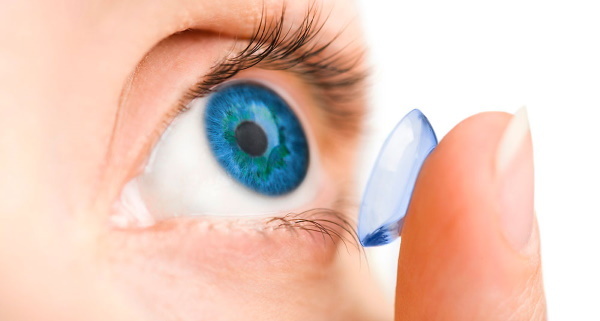
The main advantage of contact lenses is that they are completely invisible to the people around them, not cause feelings of discomfort, make it possible to conduct effective therapy for most diseases eye.
Types of contact lenses by appointment
Lenses for eyes are classified according to species characteristics, depending on the type of material from which they are made, their intended purpose, as well as indicators of optical power.
For vision correction
There are several types of lenses that are used to correct visual acuity. These are ophthalmic products of optical and therapeutic type.
Products of the first type are used to treat the following eye diseases:
- hyperopia;
- myopia;
- astigmatism;
- presbyopia.
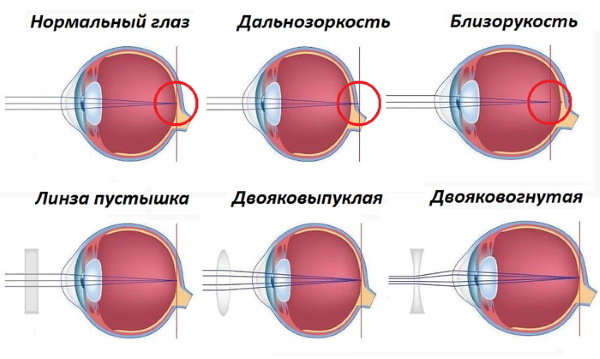
A distinctive feature of optical lenses is that they all have a certain power to increase or decrease objects in the environment. This type of ophthalmic products corrects the work of the organ of vision so as to bring its indicators to the state of the norm.
Optical contact lenses improve the quality of life of people with ophthalmic diseases, which cannot be eliminated with the help of drugs. Therapeutic type contact lenses are also used to correct vision, but they have a completely different function.
Ophthalmic products of this type act as a means to improve the results of post-traumatic eye treatment, used to retain medicinal solutions on the surface of the mucous membrane of the organ vision.
In this case, a more prolonged action of ophthalmic medicines is provided, and the process of tissue regeneration is accelerated.
Decorative lenses
Types of eye lenses include cosmetic products. Decorative lenses do not affect visual acuity or other physiological functions of the organ of vision.
Ophthalmic products of this type are used for the following purposes:
- transformation of the iris pattern;
- filling the eyeball with various patterns, symbols (a similar effect is created by carnival lenses that are worn at parties, concerts and other entertainment events);
- change in the color of the eyes;
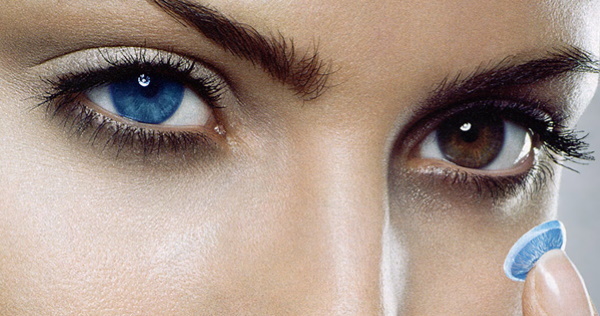
Contact lenses. There are different types of these products. They can be used to change eye color. - getting a completely different pupil shape (for example, cat or fox eyes);
- discoloration of the eyes, when visually it appears that a person has no pupils at all.
Decorative lenses are most popular among young people who are experimenting with their appearance and want to create a new image for themselves.
Depending on the individual needs of each patient, cosmetic type ophthalmic products can be supplemented with optical properties. In this case, decorative lenses are used not only to change the color of the eyes, the shape of the pupils, but also to correct the functions of vision.
Rigidity, advantages and disadvantages
The types of lenses for the eyes are classified according to the degree of rigidity of the base material from which they are made. There are ophthalmic products with a softer and denser surface. Each type of this product has its own functional purpose.
Soft contact lenses
Contact lenses made of soft material are worn by the vast majority of people who have vision problems. Distinctive features of this type of ophthalmic products are that they do not cause severe irritation of the mucous membrane of the eyes.
Already after the first use of soft contact lenses, it is possible to achieve the effect of quick addiction of the organ of vision to the presence of this product.
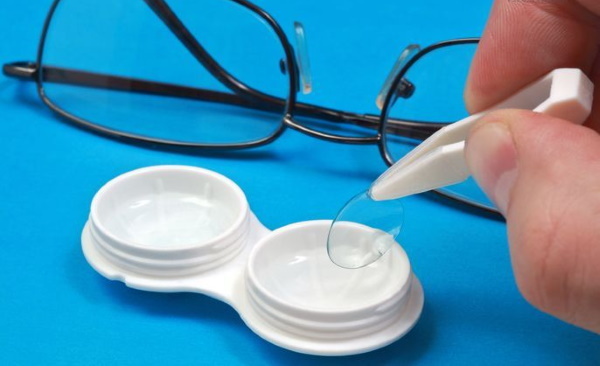
This type of product allows for the successful treatment of ophthalmic diseases of the following types:
- hyperopia;
- myopia
- astigmatism;
- presbyopia.
Soft contact lenses have minimal drawbacks. The disadvantages of this type of products include the fact that they are more demanding to care for, and also have a shorter service life.
Hard lenses
Rigid contact lenses are ophthalmic products that are used to correct impaired vision. A distinctive feature of this type of product is its denser structure. More material is consumed in the manufacturing process of rigid lenses.
This type of ophthalmic products is characterized by high quality, durability of operation, but at the same time requires a long period of eye adaptation. Patients who are prescribed to wear rigid lenses very often complain of cramps and a feeling of irritation of the mucous membrane of the organ of vision.

After the successful completion of the adaptation period, the unpleasant sensations completely disappear. Contact lenses made of dense material are considered easier to care for, and their use is associated with the treatment of difficult refractions.
Materials (edit)
Types of lenses for the eyes are produced entirely on a hydrogel or silicone-hydrogel base. Ophthalmic products, cast from the first type of material, are distinguished by increased elasticity, thin surface and soft structure.
Silicone hydrogel optics have a denser base, but at the same time they have a long service life, they are characterized by excellent quality indicators. The hydrogel material contains an increased concentration of liquid, which can reach values from 37 to 77%.
There is a direct rule that the more moisture is in the composition of a hydrogel lens, the better its permeability to oxygen molecules.
Silicone hydrogel contact lenses contain from 25 to 60% sterile water. The oxygen permeability of ophthalmic products of this type is 5 times higher, which has a positive effect on the functional state of the eyes.
Silicone hydrogel lenses can be worn for a very long period of time. In this case, the mucous membrane, as well as the cornea of the organ of vision, will not experience any discomfort, and the risk of complications is minimized.
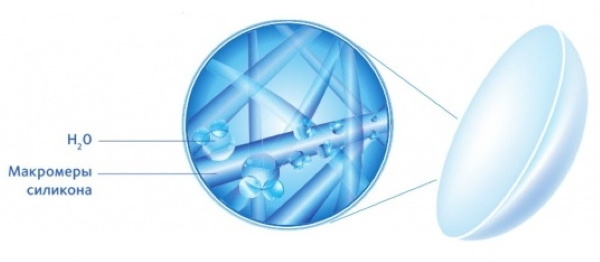
Due to their denser structure, silicone hydrogel lenses are much less saturated with moisture while in medical solutions.
Optical power
The optical power of contact lenses is indicated in diopters. It is a unit of measure for the spherical force of an ophthalmic device. In this case, this type of product can be marked with "+" or "-" depending on the present eye disease.
The optical power of this product makes it possible to correct hyperopia of varying severity, myopia, and astigmatism. The selection of the optical characteristics of contact lenses is carried out at an appointment with an ophthalmologist.
Wearing period and replacement mode
There are different types of contact lenses that do not have the same length of wear. After the expiration of the service life set by the manufacturer of the ophthalmic product, it must be replaced immediately.
The table below shows the main types of contact lenses, the basic classification of which is based on the timing of their wearing.
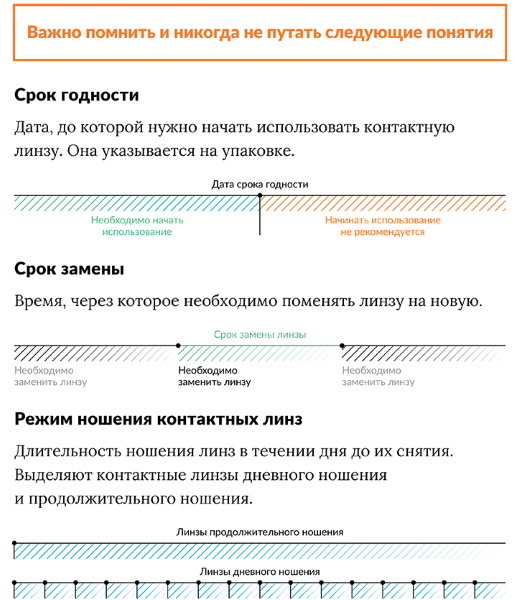
Table:
| Varieties of lenses | Characteristics of ophthalmic products |
| One-day | This type of optics differs in that the duration of their wearing is 12-14 hours. A person puts on contact lenses in the morning, wears them during the day, and removes them when they come home. After this, the ophthalmic product must be disposed of. Longer wearing of one-day lenses is fraught with irritation of the mucous membrane of the eyes, the lack of a therapeutic effect of vision correction. |
| Lenses for planned replacement | This type of lens is indicated for use over a longer period of time. Planned replacement ophthalmic products can be worn from 7 to 30 days, depending on the quality of the material from which they are made and the state of eye health. |
| Traditional | Classic lenses, which are used for permanent vision correction, are designed to be worn for at least 3 months. up to 1 year. At the same time, optics of this type do not lose their quality characteristics. |
The advantage of using disposable lenses is that there is no need to take care of the material from which they are made. In this case, the risk of eye infection by pathogenic microorganisms is minimized.
Every morning, a person opens a sterile package with an ophthalmic product, and then fixes it on the surface of the eyeball.
Form and design
Contact lenses that are used for vision correction and other therapeutic purposes are spherical. The surface of the material of such products is completely transparent without signs of decorative ornaments or any other cosmetic elements.
Contact lenses, designed to change the shade of the iris of the eyes, may have a special color coating, artistic elements that give the pupil of the organ of vision a completely different view.
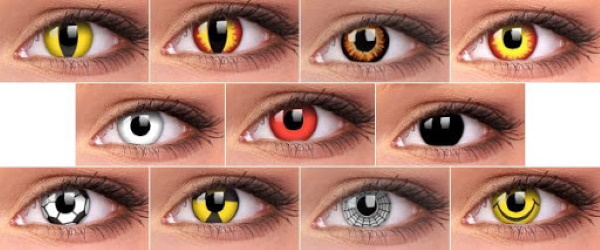
Ophthalmic products of this type can also be decorated with various patterns and symbols.
Special purpose lenses
Types of lenses for the eyes are intended for the treatment of a specific ophthalmic disease, or they serve as an element of decoration for the exterior.
The table below lists the types of special-purpose contact lenses:
| Types of lenses for special purposes | Distinctive features of this type of ophthalmic products |
| Spherical | Spherical lenses are used for the treatment of eye diseases such as hyperopia and myopia. This type of optics can be made entirely of transparent material, or it has a certain color shade. |
| Toric | The special purpose of toric lenses is that this type of ophthalmic product is used to treat astigmatism. |
| Multifocal | Multifocal contact lenses are used to treat presbyopia. |
Lenses with an aspherical design can be used depending on the individual needs of the patient, as well as the type of ophthalmic disease.

The intended purpose of products of this type largely depends on the material from which they are cast.
How to choose eye lenses yourself?
In order to proceed to the stage of self-selection of contact lenses, it is necessary to undergo a comprehensive examination by an ophthalmologist.
Based on the results of the diagnosis of the organ of vision, the doctor will draw up a medical report, in which he will describe in detail the type of disease detected, and also indicate the recommended methods of its treatment.
At an appointment with an ophthalmologist, it is necessary to focus on the desire to wear contact lenses, and not the classic optics in the form of glasses with frames. The doctor will draw up a prescription for the purchase of an ophthalmic product with the appropriate parameters.
After that, you can independently go to the pharmacy or specialty store for purchase of contact lenses with the necessary therapeutic characteristics, a certain shape and optical power.
In the absence of direct medical contraindications, you can choose an ophthalmic product with design features. For example, lenses that not only provide high-quality vision correction, but also change the color tone of the iris.
It is not recommended to buy optics for the treatment of ophthalmic diseases without a preliminary examination by a doctor.
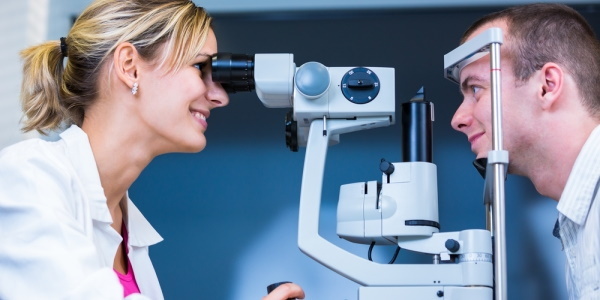
These actions are fraught with the wrong choice, which can lead to a further decrease in visual acuity.
Explanation of designations on the packaging
The sterile packaging containing contact lenses is marked with the following designations of their parameters, which you can decipher yourself.
Namely:
- optical power, which is displayed in diopters (DPTR "-" or "+" depending on the state of a person's vision, as well as a numerical coefficient is indicated next to these symbols);
- oxygen permeability in the form of Dk / t marking, which in most cases ranges from 15 to 40 units for hydrogel lenses and 70-170 units for silicone hydrogel type products;
- contact lens thickness at the center of the sphere, indicated by the Latin letter "t" followed by the corresponding figure depending on what type of ophthalmic product is needed to the patient;
- moisture content greater than or less than 50% (contact lenses with increased concentration of water differ in a softer and more elastic material, to which the mucous membrane gets used much faster the shell of the eyes);
- OD indicates that the described parameters are for the lens intended for the right eye, and the OS mark is for the characteristics of the ophthalmic device for the left eye.
The patient's left and right contact lens settings may not match. For example, if a person needs medical correction of the organ of vision, but at the same time he has a different functional state of the eyeballs.
How to understand that the choice is wrong?
People who have misplaced contact lenses will soon experience the following symptoms:
- decreased visual acuity;
- inability to focus on one or several objects of the environment at once;
- constant irritation of the mucous membrane of the eyes;
- lacrimation;
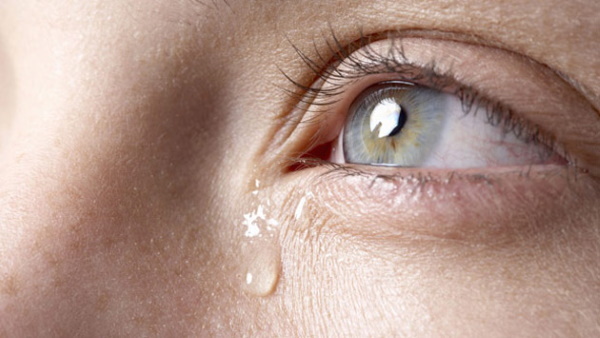
- a persistent feeling of dryness in the eye;
- itching of tissues in the conjunctival region;
- violation of oxygen access to the eyeball, which entails hypoxia of the organ of vision;
- keratoconjunctivitis of an infectious nature of origin, which is caused by a decrease in local immunity;
- mechanical damage to the surface of the cornea of the eye;
- various kinds of allergic reactions.
The appearance of the above signs of a painful condition of the eyes requires an immediate refusal to wear improperly selected contact lenses and undergo a comprehensive examination of the organ of vision.
Recommendations for care and use
Contact lenses are easy to maintain. In order to maintain the functionality of the ophthalmic product, as well as the health of your own eyes, the following rules must be observed.
Scroll:
- Before placing the lens on the surface of the eye, wash your hands thoroughly using water and toilet soap.
- Cleaning of the ophthalmic product should be carried out using a special solution, the type of which is indicated in the instructions for use of the optics.
- Hands should only be wiped off with a lint-free towel, as tissue particles can get on the surface of the lens, and with it on the surface of the mucous membrane of the eye.
- Storage of the ophthalmic product should be carried out only in a special case filled with a solution for lens care.
- Never leave this optics on the surface of environmental objects, because this is fraught with eye infection.
- Do not forget to replace solutions that are used for antiseptic cleaning and storage of lenses.
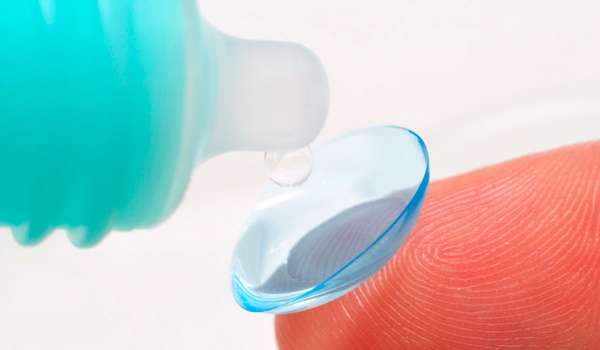
Replacement of ophthalmic products of this type should be carried out in a timely manner without missing the deadlines set by their manufacturer. Violation of this rule can lead to the development of complications.
Review of proven lenses from the best manufacturers
On the market for optics for vision correction, there is a large selection of high-quality contact lenses that have different purposes.
Night lenses for vision correction
Night lenses or orthokeratology lenses are worn only during sleep. A distinctive feature of this type of ophthalmic products is that they carry out vision correction due to the formation of the correct position of the retina.
The lenses of this type include optical products Emerald and MoonLens (USA).
Best daily lenses
The best daily lenses are Acuvue 1 Day Trueye ophthalmic products (manufactured by Johnson & Johnson, USA) and Coopervision Proclear 1 Day. Optics of this type are intended for daytime vision correction only. Before going to bed, the lenses are removed and discarded, and a new set is installed the next day.
Best contact lenses for a month
The best contact lenses with a duration of 30 days are the brands Air Optix Agua (Alcon, USA) and Maxima 55 UV (Maxima, UK).

Ophthalmic products of this type are distinguished by a very thin material, do not irritate the eyes, and have a sufficient degree of moisture.
Best contact lenses for 3 months
For longer wear for 3 months, it is recommended to use the best lenses in the form of 365 Day Bright Vision (China) and Adria Season (Interejo, South Korea). These optics are made from FDAI non-ionic hydrogel and are also highly resistant to protein deposits.
The best contact lenses for six months
For continuous wear for 6 months, Morning Q55 Vial (Hioxifilcon A, South Korea) and Sea Clear Vail (Gelflex, Australia) are suitable.
Ophthalmic products of these types have a very smooth surface, are hypoallergenic and resistant to the effects of protein deposits.
Best colored contact lenses
The best colored lenses are Butterfly Three-tone products (Ophthalmix, South Korea). They create chameleon blue eyes from cornflower blue to turquoise.
Soflens New Natural Colors (manufactured by Bausch & Lomb, USA) are the best cosmetic lenses, the line of which contains at least 10 color shades.
Best Astigmatic Contact Lenses
The best lenses for the treatment of astigmatism are Soflens 66 Toric (Bausch & Lomb, USA) and Dailies Agua Toric (Alcon, USA).
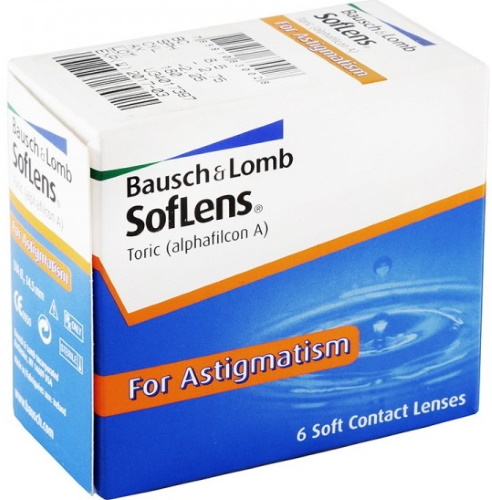
Ophthalmic products of this type are distinguished by a higher level of moisture, which is 69%, and also adhere as closely as possible to the surface of the cornea of the eye.
Prices
The table below shows the average prices for the best contact lenses of various types and manufacturers:
| Contact lens name | Ophthalmic product price |
| Emerald | RUB 20,900 (2 pcs.) |
| Moonlens | RUB 22,000 (2 pcs.) |
| Acuvue 1 Day Trueye | 1300 RUB (30 pcs.) |
| Coopervision Proclear 1 Day | RUB 1100 (30 pcs.) |
| Air Optix Agua | 1350 RUB (6 pcs.) |
| Maxima 55 UV | RUB 930 (6 pcs.) |
| 365 Day Bright Vision | RUB 700 (2 pcs.) |
| Adria season | 390 RUB (2 pcs.) |
| Morning Q55 Vial | RUB 350 (1 PC.) |
| Sea clear vail | RUB 410 (1 PC.) |
| Butterfly Three-tone | 450 RUB (2 pcs.) |
| Soflens new natural colors | 450 RUB (2 pcs.) |
| Soflens 66 Toric | 1300 RUB (6 pcs.) |
| Dailies Agua Toric | RUB 900 (30 pcs.) |
Contact lenses are a type of optics used to correct impaired vision. Ophthalmic products of this type have different purposes. Contact lenses are classified into corrective, therapeutic, and decorative.
The first type of optics is used to improve the quality of human vision, eliminate the negative consequences of myopia or hyperopia. Therapeutic lenses are used to retain medicinal solutions applied to the surface of the mucous membrane of the organ of vision.
Decorative ophthalmic products perform a cosmetic function, changing the color shade of a person's eyes, giving the pupil a completely different shape. The selection of contact lenses should be carried out only with the participation of a qualified ophthalmologist.
Video about lenses for eyes
How to choose contact lenses:



